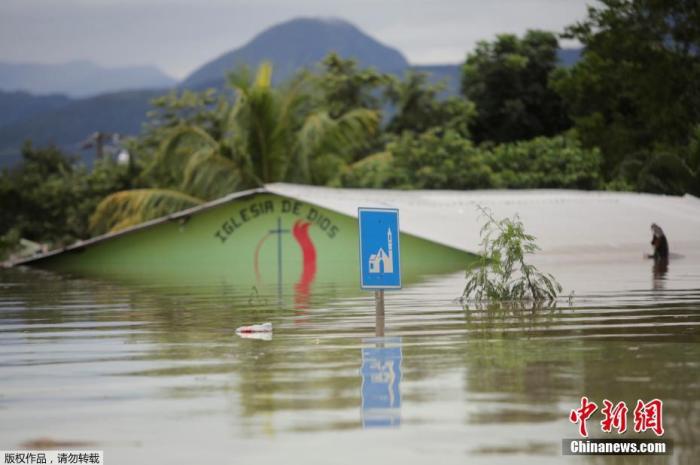November 17th. According to Agence France-Presse, the National Hurricane Center (NHC) warned that later on the 16th, Hurricane Iota had become “catastrophic” as it moved towards Central America. Class hurricane.
In Honduras, “Iota” has caused strong winds and rainfall in many areas. Local media reported that since the 14th, more than 175,000 people have been evacuated.
On November 5, local time, in Pimienta, Honduras, a local building was submerged in the water after Hurricane ETA hit.
The National Hurricane Center said that the hurricane will “bring catastrophic winds, life-threatening storm surges and heavy rains”, adding that “according to the predicted trajectory, the hurricane warning of’Iota’ in northeastern Nicaragua will be issued on the evening of the 16th.
Landing in the area.” “Iota” has a maximum sustained wind speed of 160 miles (260 kilometers) per hour.
According to reports, a Category 5 hurricane can destroy many houses and disrupt the power supply. Most of the affected areas are “uninhabitable for a few weeks or months.”
Sepulveda, the police chief of the Providencia region on the Caribbean island of Colombia, said that part of the roof of the local hospital was destroyed and about 6,000 people lost power. In Cartagena, about 155,000 residents were affected.
On the 16th local time, hundreds of residents near the port of Cabezas on the northeast coast of Nicaragua were still waiting to be evacuated.
In addition, the Salvadoran government announced a “red alert” before the hurricane. Large areas of Guatemala have not recovered from the impact of Hurricane ETA, and are also on high alert.



